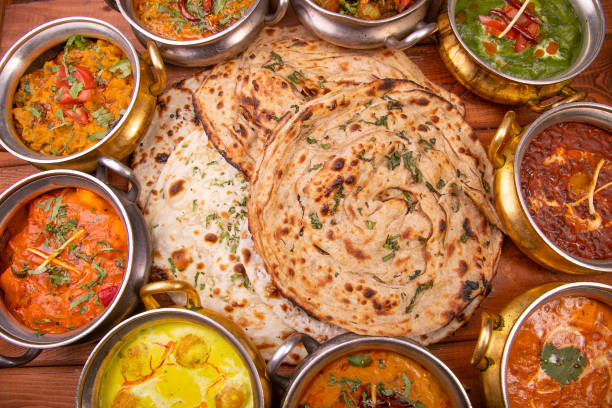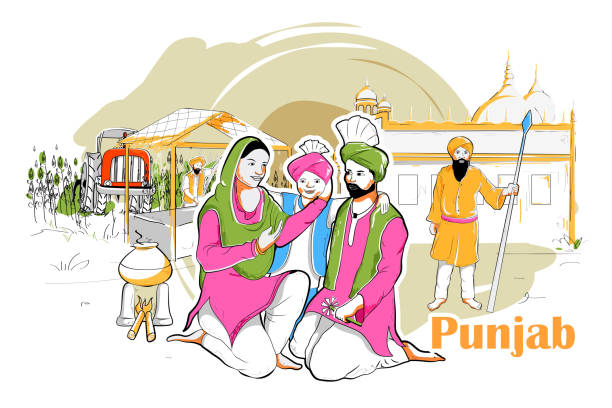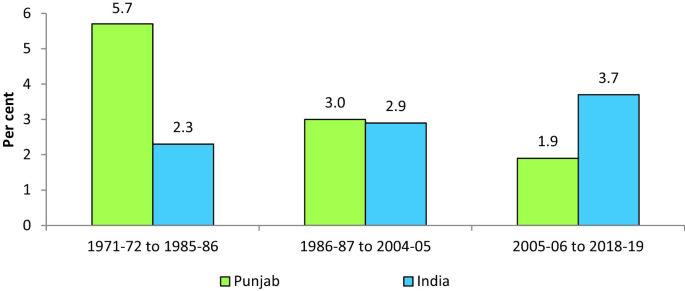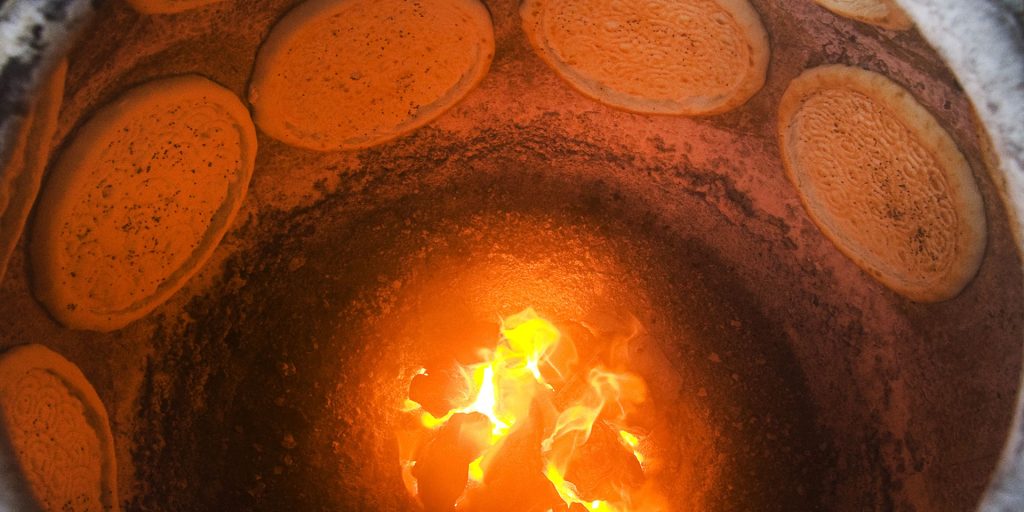What is the speciality of Punjabi food? This question opens the door to one of India’s most celebrated culinary traditions. Punjabi cuisine stands as a testament to the rich cultural heritage and agricultural abundance of the Punjab region, spanning parts of northern India and eastern Pakistan. Known for its robust flavors, generous use of dairy products, and distinctive cooking techniques, Punjabi food has earned global recognition for its hearty, satisfying qualities that warm both body and soul.
The speciality of Punjabi food lies in its perfect balance of flavors, textures, and aromas, achieved through time-honored cooking methods and carefully selected spices. Unlike the subtle flavors of some Indian regional cuisines, Punjabi dishes boldly announce their presence with rich gravies, aromatic spice blends, and liberal use of ghee (clarified butter). This cuisine reflects the agricultural prosperity of Punjab – the “land of five rivers” – where wheat fields stretch to the horizon and dairy farming has flourished for centuries. Indian food collection dishes on the table

Significance of Punjabi Food
When exploring what is the speciality of Punjabi food, we must consider both its historical evolution and contemporary significance. From the tandoor (clay oven) that imparts a distinctive smoky flavor to breads and meats, to the slow-cooked daals (lentils) that form the backbone of daily meals, Punjabi cooking techniques have been refined over generations. These methods transform simple ingredients into complex flavor experiences that have captivated food lovers worldwide.
The global popularity of Punjabi cuisine speaks to its universal appeal. Dishes like butter chicken, tandoori chicken, and chole bhature have become ambassadors of Indian food internationally. What makes these dishes special is not just their taste but the stories they tell about Punjab’s history, agricultural traditions, and the warmth of its people. As we delve deeper into what is the speciality of Punjabi food, we’ll discover how this cuisine has maintained its authenticity while adapting to changing times and tastes.
The Rich Heritage of Punjabi Cuisine Through the Ages
Historical Evolution of Punjabi Cuisine
Punjabi cuisine has evolved over thousands of years, shaped by various historical influences that have enriched its character and complexity. The fertile plains between the five rivers of Punjab created ideal conditions for agriculture, establishing the foundation for a food culture centered around fresh, seasonal ingredients. Archaeological evidence suggests that the cultivation of wheat and barley in this region dates back to the Indus Valley Civilization (3300-1300 BCE), setting the stage for the wheat-based breads that remain central to Punjabi meals today. This agricultural abundance has consistently influenced what is the speciality of Punjabi food, creating a cuisine that celebrates the bounty of the land.
The strategic location of Punjab as a gateway to the Indian subcontinent meant that it witnessed numerous invasions and migrations throughout history. Each wave of newcomers – from Persian and Afghan invaders to Mughal rulers – brought new ingredients, cooking techniques, and flavor profiles that were gradually incorporated into local culinary traditions. The Mughal influence, in particular, introduced rich gravies, aromatic spices, and the concept of slow cooking, which became defining characteristics of Punjabi cuisine. The tandoor, now synonymous with Punjabi cooking, gained prominence during this period, revolutionizing how breads and meats were prepared.

The partition of India in 1947 marked another significant turning point in the evolution of Punjabi cuisine. As millions of Punjabis were displaced and resettled across the newly formed borders, they carried their culinary traditions with them, establishing Punjabi restaurants in different parts of India and eventually worldwide. This diaspora played a crucial role in popularizing Punjabi food globally, transforming local specialties into internationally recognized dishes. Today, the historical journey of Punjabi cuisine continues to unfold, as chefs and home cooks alike reinterpret traditional recipes while preserving the essential qualities that define what is the speciality of Punjabi food.
Cultural Significance in Punjabi Society
In Punjabi society, food transcends mere sustenance to become a powerful expression of cultural identity, hospitality, and community bonds. The preparation and sharing of meals form the cornerstone of social interactions, from everyday family dinners to elaborate wedding feasts. Punjabi cuisine reflects the region’s agricultural lifestyle, where farming communities developed hearty, energy-rich dishes to sustain long hours of physical labor in the fields. This connection to the land remains evident in seasonal specialties that celebrate harvest festivals and mark the changing rhythms of rural life.
The concept of “Langar” – the community kitchen in Sikh Gurdwaras that serves free meals to all visitors regardless of religion, caste, or social status – exemplifies the egalitarian values embedded in Punjabi food culture. This tradition, established by Guru Nanak in the 15th century, continues to influence how Punjabis view food as a means of bringing people together and breaking down social barriers. The simple yet nourishing meals served in Langars, typically consisting of dal (lentils), roti (flatbread), and sabzi (vegetable dish), represent the essence of Punjabi cuisine – flavorful, satisfying, and inclusive.

Gender dynamics in Punjabi food traditions reveal interesting cultural patterns. Historically, women have been the primary custodians of culinary knowledge, passing down recipes and techniques through generations. The kitchen served as a space where women exercised authority and creativity, developing the distinctive cooking styles that define what is the speciality of Punjabi food. In traditional Punjabi households, the ability to prepare good food was considered an essential skill for women, reflecting broader social expectations about gender roles. However, contemporary Punjabi society has witnessed evolving attitudes, with professional cooking spaces increasingly welcoming men and home kitchens becoming more gender-inclusive.
Agricultural Influence on Punjabi Food Traditions
Punjab food traditions are inextricably linked to the region’s agricultural prosperity, earning it the title of “India’s breadbasket.” The fertile alluvial soil, extensive irrigation systems, and favorable climate create ideal conditions for cultivating a variety of crops that form the foundation of Punjabi cuisine. Wheat, the predominant grain, appears in numerous forms – from the everyday roti and paratha to festive specialties like makki di roti (cornmeal bread). This agricultural abundance directly shapes what is the speciality of Punjabi food, creating a cuisine that celebrates seasonal ingredients and farm-fresh flavors.
The following table illustrates the key agricultural products of Punjab and their culinary applications:
| Agricultural Product | Culinary Applications in Punjabi Cuisine |
|---|---|
| Wheat | Chapati, naan, paratha, puri, bhatura |
| Rice | Pulao, biryani, kheer, side dish with curries |
| Maize (Corn) | Makki di roti, corn-based snacks |
| Mustard Greens | Sarson da saag, mixed green preparations |
| Dairy (Milk, Butter, Ghee) | Lassi, paneer, butter-enriched gravies, ghee for cooking |
| Sugarcane | Gur (jaggery) for desserts and sweeteners |
| Pulses (Chickpeas, Lentils) | Chole, various dals, flour for fritters |
| Seasonal Vegetables | Diverse vegetable preparations, mixed dishes |
The dairy farming tradition in Punjab has profoundly influenced its cuisine, making milk products central to many dishes. The liberal use of ghee (clarified butter), butter, cream, and paneer (cottage cheese) creates the rich, indulgent character that distinguishes Punjabi food from lighter regional cuisines in India. Lassi, a yogurt-based drink, exemplifies how dairy products are transformed into refreshing beverages that complement the robust flavors of Punjabi meals. This emphasis on dairy contributes significantly to what is the speciality of Punjabi food, adding creamy textures and depth of flavor to both vegetarian and non-vegetarian dishes.

Seasonal variations in Punjabi cooking reflect the agricultural cycles and available produce. Winter brings specialties like sarson da saag (mustard greens) paired with makki di roti (cornmeal bread), utilizing the abundant mustard crops. Summer meals feature lighter preparations and cooling ingredients like yogurt and fresh vegetables. This seasonal rhythm keeps Punjabi cuisine dynamic and connected to natural cycles, demonstrating how agricultural patterns continue to influence food traditions even in modern times.
Traditional Punjabi Food: Cooking Techniques and Methods
The Iconic Tandoor: Heart of Punjabi Cooking
The tandoor, a traditional clay oven, stands as perhaps the most distinctive element defining what is the speciality of Punjabi food. This cylindrical oven, typically made from clay and insulated with materials like cow dung or concrete, reaches temperatures of 480°C (900°F) or higher, creating the perfect environment for quick cooking while sealing in flavors. The tandoor’s design – with its intense heat radiating from all sides – produces the characteristic charred exterior and moist interior that makes tandoori dishes immediately recognizable. This cooking method predates modern ovens by centuries, yet remains central to authentic Punjabi cuisine both in homes and restaurants.

What makes tandoor cooking truly special is its versatility. From the various breads that emerge puffed and blistered to the marinated meats that develop a distinctive smoky char, the tandoor transforms a wide range of ingredients. Naan, roti, paratha, and kulcha – the bread family of Punjabi cuisine – each develop unique textures when slapped against the tandoor’s inner walls. Meats like chicken, lamb, and fish, typically marinated in yogurt and spices, cook quickly while remaining juicy, as the intense heat sears the exterior and traps moisture inside. This technique creates the signature tandoori chicken that has become an ambassador of Punjabi cuisine worldwide.
The social aspect of tandoor cooking adds another dimension to what is the speciality of Punjabi food. In traditional Punjabi villages, communal tandoors often served as gathering places where women would bring their prepared dough to bake bread while exchanging news and stories. This community-centered approach to cooking reflects the broader cultural values of Punjab, where food preparation and consumption are inherently social activities. Today, the sight of a chef skillfully managing a tandoor – reaching in with long skewers to position and retrieve food without burning themselves – remains a captivating demonstration of culinary expertise that connects modern diners to centuries-old traditions.
Slow Cooking and Simmering Techniques of Punjabi Food
Slow cooking represents another fundamental technique that defines what is the speciality of Punjabi food, creating the deep, complex flavors that characterize many beloved dishes. This method involves cooking ingredients over low heat for extended periods, allowing flavors to develop fully and tough ingredients to become tender.
Dal makhani exemplifies this approach – black lentils and kidney beans are simmered for hours, sometimes overnight, resulting in a creamy texture and rich taste that cannot be achieved through quick cooking. Similarly, traditional preparations of rajma (kidney bean curry) and chole (chickpea curry) rely on slow simmering to transform humble legumes into dishes of remarkable depth and character.

The “dum” cooking technique, influenced by Mughal culinary traditions, has been embraced in Punjabi cuisine for preparing special dishes. This method involves sealing a pot with dough to trap steam and cooking over very low heat, allowing the ingredients to cook in their own juices. Dum biryani, where layers of partially cooked rice and marinated meat are sealed and slow-cooked together, exemplifies this technique. The result is a dish where distinct flavors meld harmoniously while each ingredient maintains its integrity. This patient approach to cooking reflects the unhurried rural lifestyle traditionally associated with Punjab and contributes significantly to what is the speciality of Punjabi food.
Traditional Punjabi kitchens employed various vessels designed specifically for slow cooking, each imparting subtle characteristics to the finished dish. Heavy brass or copper handi (round-bottomed cooking pots) distributed heat evenly for simmering curries, while iron kadhai (wok-like pans) were used for prolonged bhunao (sautéing) of masalas (spice mixtures). Clay pots, which release moisture slowly during cooking, were preferred for certain dishes like sarson da saag. These traditional cooking vessels, many still used in authentic Punjabi kitchens today, demonstrate how specialized equipment evolved to support the cooking techniques that create the distinctive flavors central to what is the speciality of Punjabi food.
Distinctive Spice Blends and Flavor Profiles
The masterful use of spices constitutes a defining element of what is the speciality of Punjabi food, creating the bold, aromatic flavor profiles that make this cuisine instantly recognizable. Unlike some Indian regional cuisines that rely on complex spice mixtures, traditional Punjabi cooking often employs a relatively straightforward yet perfectly balanced combination of spices. The foundation typically includes cumin, coriander, turmeric, red chili, and garam masala, with each dish requiring specific proportions to achieve its characteristic taste. This approach reflects the Punjabi philosophy of allowing high-quality ingredients to shine while enhancing rather than overwhelming their natural flavors.
Garam masala, a warming spice blend, plays a particularly important role in Punjabi cuisine. The traditional Punjabi version typically includes cinnamon, cloves, cardamom, black pepper, and nutmeg, though family recipes may vary. What distinguishes Punjabi garam masala is often the proportion of spices and when it’s added during cooking – typically toward the end to preserve aromatic qualities. This careful timing in spice addition represents the sophisticated understanding of flavor development that underlies what is the speciality of Punjabi food. The following list highlights key spice combinations that define different categories of Punjabi dishes:
- Tandoori Marinades: Red chili powder, garam masala, carom seeds (ajwain), and dried fenugreek leaves (kasuri methi) create the distinctive flavor of tandoori preparations
- Vegetable Curries: Cumin, coriander, turmeric, and asafoetida (hing) form the foundation, with garam masala added for complexity
- Meat Dishes: Black cardamom, cloves, cinnamon, and bay leaves create the aromatic base for slow-cooked meat preparations
- Dals (Lentils): Cumin, ginger, garlic, and dried mango powder (amchur) provide the characteristic tangy notes
- Street Food: Chaat masala, with its sour and tangy profile from dried mango powder and black salt, defines many Punjabi street food items
The tempering technique (tadka or chaunk) represents another crucial element in developing the distinctive flavors of Punjabi cuisine. This method involves heating oil or ghee and briefly frying whole or ground spices to release their essential oils before adding them to a dish, either at the beginning of cooking or as a finishing touch. The sizzling sound and aromatic cloud that rises from a well-executed tadka signals the transformation of raw spices into complex flavor compounds. This technique, requiring precise timing and temperature control, exemplifies the culinary expertise that defines what is the speciality of Punjabi food.
What is Punjabi Food: Core Ingredients and Flavor Profiles
Essential Ingredients in Punjabi Pantry
Understanding what is Punjabi food begins with recognizing the essential ingredients that form the foundation of this cuisine. The Punjabi pantry reflects the agricultural abundance of the region, with staples that have remained consistent for generations despite evolving cooking styles. Wheat flour (atta) stands as perhaps the most fundamental ingredient, used daily to prepare various breads that accompany nearly every meal. This emphasis on wheat-based staples distinguishes Punjabi cuisine from the rice-dominant traditions of southern India and reflects the region’s agricultural patterns. The quality of atta – its fineness, protein content, and freshness – significantly impacts the texture and taste of breads, making it a critical element in what is the speciality of Punjabi food.
Dairy products occupy a central place in the Punjabi pantry, used in quantities that surprise those unfamiliar with this cuisine. Ghee (clarified butter) serves as the preferred cooking medium, imparting a distinctive nutty flavor and rich mouthfeel to dishes. Fresh butter, often homemade, gets generously applied to hot rotis or used to finish dishes like dal makhani. Paneer (fresh cottage cheese), made by curdling milk with lemon juice or vinegar, features in numerous vegetarian preparations, from simple paneer bhurji (scrambled paneer) to elaborate palak paneer (spinach with cottage cheese). Yogurt appears in marinades, gravies, and refreshing drinks like lassi, contributing tangy notes and tenderizing properties. This abundant use of dairy creates the creamy, indulgent character that defines what is the speciality of Punjabi food.
The legume family provides protein-rich staples that feature prominently in daily Punjabi meals. Various lentils (dal), chickpeas (chole), and kidney beans (rajma) transform into hearty dishes through slow cooking and careful spicing. The following table outlines key ingredients in the Punjabi pantry and their culinary applications:
| Ingredient Category | Examples | Common Uses in Punjabi Cuisine |
|---|---|---|
| Grains | Wheat flour, Rice, Corn meal | Breads (roti, naan, paratha), Pulao, Makki di roti |
| Dairy | Ghee, Butter, Paneer, Yogurt, Cream | Cooking medium, Enriching curries, Main protein in vegetarian dishes, Marinades, Beverages |
| Legumes | Black gram, Chickpeas, Kidney beans, Yellow lentils | Dal makhani, Chole, Rajma, Various dal preparations |
| Vegetables | Mustard greens, Spinach, Potatoes, Cauliflower, Eggplant | Sarson da saag, Aloo gobi, Baingan bharta |
| Proteins | Chicken, Lamb, Fish | Tandoori preparations, Curries |
| Spices | Cumin, Coriander, Turmeric, Garam masala, Dried fenugreek leaves | Flavor base for most dishes |
| Aromatics | Onions, Garlic, Ginger, Green chilies | Foundation for curries and marinades |
Fresh produce plays a seasonal role in Punjabi cooking, with certain vegetables achieving iconic status in regional specialties. Mustard greens (sarson) become the celebrated sarson da saag in winter months, while spinach, potatoes, cauliflower, and eggplant appear year-round in various preparations. The emphasis on fresh, seasonal vegetables connects Punjabi cuisine to its agricultural roots and contributes to the wholesome, nourishing quality that characterizes what is the speciality of Punjabi food.
Balancing Flavors: The Punjabi Approach
What is Punjabi food if not a masterclass in flavor balancing? The distinctive taste profile of Punjabi cuisine emerges from a sophisticated understanding of how different flavor elements interact and complement each other. Unlike some regional Indian cuisines that might emphasize a particular taste direction – such as the sourness in Goan food or the sweetness in Gujarati dishes – Punjabi cooking achieves a harmonious balance where no single flavor dominates. This balanced approach creates dishes with remarkable depth and complexity, allowing diners to experience layers of taste that unfold with each bite.
The interplay between richness and acidity exemplifies this balancing act. Creamy, dairy-rich preparations like butter chicken or dal makhani incorporate tomatoes, dried mango powder (amchur),
For more information on Indian food and culture, visit our website: WhatistheSpecialityOf.
